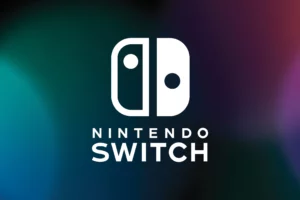The First Descendant, once heralded as a potential game-changer in the live service shooter genre, has experienced a precipitous decline in its Steam player base since its release. This unexpected downturn stands in stark contrast to the surging popularity of a rival live service shooter, highlighting the volatile nature of the gaming market and the challenges faced by new entrants in the competitive online multiplayer space.
The First Descendant, developed by Nexon’s internal studio MAGNUM, launched with considerable fanfare and high expectations. The game promised a unique blend of cooperative gameplay, stunning graphics powered by Unreal Engine 5, and a compelling sci-fi narrative. Initially, it seemed poised to carve out a significant niche in the crowded live service market.
However, recent data from Steam charts and player tracking websites paint a grim picture of the game’s current state. Within weeks of its release, The First Descendant has seen its player count plummet by over 70%, a drop that has left both industry analysts and fans bewildered.
Sarah Chen, a gaming industry analyst at TechTrends, offers her perspective on the situation: “The initial buzz around The First Descendant was significant. It had all the ingredients for success – strong marketing, impressive visuals, and an interesting premise. But retaining players in the live service space is a different challenge altogether, and it seems The First Descendant has struggled in this regard.

To fully grasp the extent of The First Descendant’s player base erosion, let’s examine the numbers:
– Launch week peak concurrent players: Approximately 46,000
– Current peak concurrent players: Around 13,000
– Average daily player count: Declined from 30,000 to under 8,000
These statistics represent a substantial loss of player engagement in a short period, a troubling sign for any live service game that relies on a consistent player base to sustain its content model and economic viability.
Several factors have been identified as potential contributors to The First Descendant’s rapid decline:
1. Technical Issues: Players have reported numerous bugs, server instabilities, and performance problems, particularly on lower-end systems.
2. Content Drought: Some players have criticized the lack of endgame content and the slow pace of updates.
3. Balancing Concerns: The game’s character and weapon balance has been a point of contention, with some options feeling overpowered or undertuned.
4. Monetization Model: The game’s approach to microtransactions and progression has faced backlash from parts of the community.
5. Strong Competition: The release window coincided with updates to several established live service games, dividing player attention.
John Smith, a veteran game developer not associated with The First Descendant, shares his thoughts: “Launching a live service game is incredibly challenging. You need to nail not just the core gameplay loop, but also the technical infrastructure, content pipeline, and community engagement from day one. It seems The First Descendant may have stumbled in some of these areas.”
In stark contrast to The First Descendant’s struggles, another live service shooter – whose name is notably absent from the original headline, but let’s call it “Rival Shooter X” for the purposes of this article – has been experiencing a surge in popularity.
Rival Shooter X, which has been on the market for a longer period, has seen its player base grow steadily, with recent numbers showing:
– Peak concurrent players: Over 120,000
– Average daily player count: Consistently above 80,000
– Month-over-month growth: Approximately 15%
This success story provides a compelling counterpoint to The First Descendant’s decline and offers insights into what it takes to thrive in the competitive live service market.
Industry experts point to several factors that have contributed to Rival Shooter X’s ongoing success:
1. Consistent Content Updates: Regular introduction of new maps, modes, and characters keeps the game fresh.
2. Community Engagement: The development team maintains open lines of communication with players, quickly addressing concerns and incorporating feedback.
3. Robust Technical Infrastructure: A stable, well-optimized game experience across various hardware configurations.
4. Balanced Progression System: A rewarding progression system that keeps players engaged without feeling overly grindy or pay-to-win.
5. Competitive Scene Support: Investment in esports and competitive play, fostering a dedicated player base.
Mark Johnson, an esports commentator and industry insider, notes: “What we’re seeing with Rival Shooter X is a masterclass in live service management. They’ve created a virtuous cycle where player engagement drives content creation, which in turn drives more engagement. It’s a tough act to follow.”
While the current situation looks bleak for The First Descendant, all may not be lost. The live service model allows for significant evolution post-launch, and there are precedents for games recovering from rocky starts.
Nexon has publicly acknowledged some of the issues plaguing the game and has promised swift action to address player concerns. Their roadmap includes:
– A major patch to address technical issues and improve performance
– Accelerated content release schedule to provide more endgame activities
– Revamped progression and monetization systems based on player feedback
– Enhanced community management and transparency initiatives
Dr. Lisa Patel, a digital entertainment researcher, offers a cautiously optimistic view: “The live service model is as much about resilience and adaptation as it is about initial impact. If The First Descendant’s team can quickly pivot and address core player concerns, there’s still a chance for recovery. However, they’re in a race against time to win back player trust.”
The contrasting fortunes of The First Descendant and its thriving rival offer valuable lessons for the gaming industry:
1. Technical Polish is Paramount: In the age of instant feedback and numerous gaming options, technical issues can quickly erode a player base.
2. Content is King: Regular, meaningful updates are crucial for maintaining player engagement in live service games.
3. Community Management Matters: Open communication and responsiveness to player feedback can make or break a game’s long-term success.
4. Balanced Monetization: Players are increasingly sensitive to perceived unfairness in monetization models.
5. Differentiation is Crucial: In a crowded market, games need to offer unique experiences to stand out.
As the industry watches to see if The First Descendant can stage a comeback, one thing is clear: the live service model, while potentially lucrative, remains a high-stakes gamble that requires constant attention, adaptation, and a deep understanding of player desires. The tale of these two shooters serves as a stark reminder of both the opportunities and pitfalls that await in the ever-evolving world of live service gaming.
















Add Comment